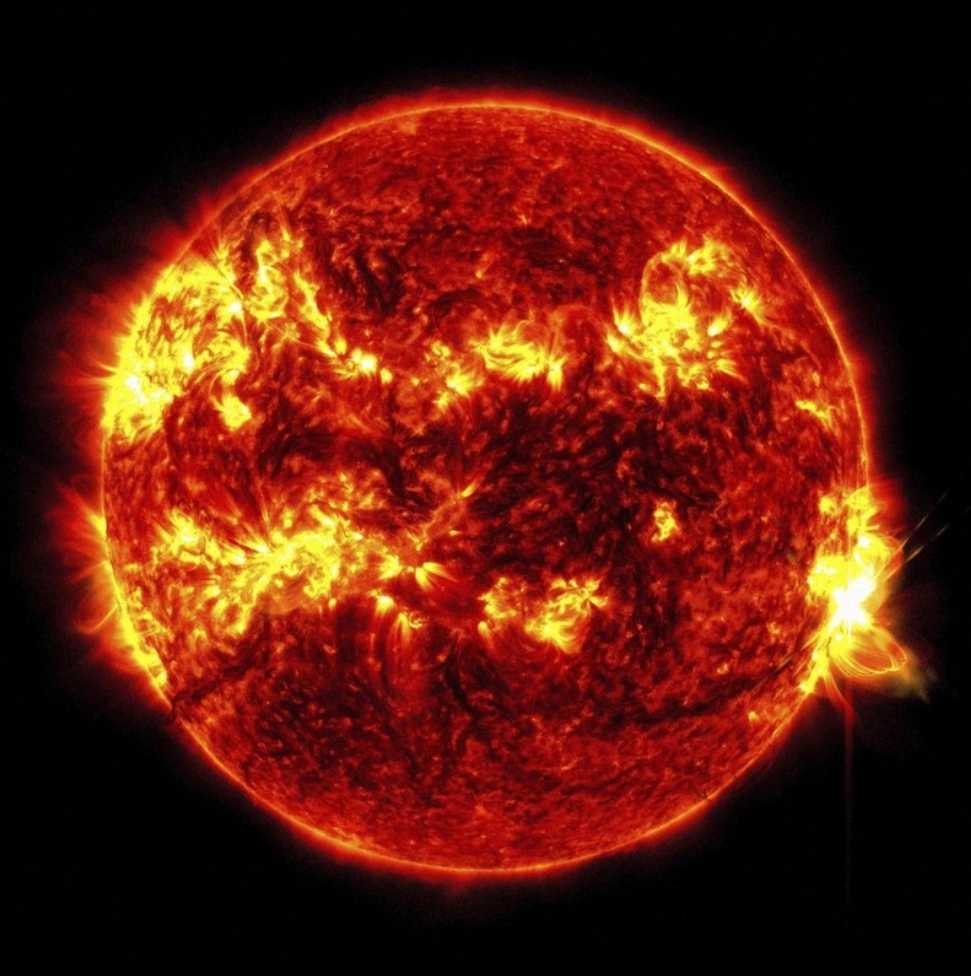Solar flares putting satellite, communications tech in line of fire

This supplied photo shows a strong X-class solar flare observed on May 14, 2024, U.S. time
Solar flares — massive explosions on the sun’s surface which recently have been occurring at an increasing rate — have resulted in auroras being observed in areas of Japan where the natural light displays are rarely seen.
The phenomena, which cause geomagnetic storms that disrupt the planet’s magnetic field, have been seen around the world and in areas such as Hokkaido, Japan’s northernmost main island, and other regions of the country since May 8.
It is a clear indication of increasing solar activity, causing experts to increase their vigilance over concerns that larger solar flares may wreak havoc with satellites or interfere with global positioning systems, posing the threat of disruption to people’s daily lives, such as major power outages and communication problems with airplanes and ships.
Since around May 11, there have been a series of images posted on social media of the northern lights — normally most visible in the polar region of the Arctic — snapped in Hokkaido, central Japan’s Ishikawa Prefecture and other locations.
Reports of the colorful light streams have also been made in Britain, the southern areas of the United States and parts of Europe.

This file photo shows aurora-like phenomenon observed in Abashiri, Hokkaido, at 12:06 a.m. on May 12, 2024, thought to have been caused by a solar flare
A solar flare is an explosion that occurs on a sunspot on the sun’s surface, ejecting powerful X-rays and electrically charged particles called plasma into space in the form of solar wind.
Mass ejections from the sun’s corona can reach the Earth’s upper atmosphere in large quantities, resulting in magnetic storms and auroras. A magnetic storm in February 2022 resulted in the loss of 40 of the 49 satellites then launched by U.S.-based company SpaceX.
The number of sunspots and the frequency of solar flares change on a roughly 11-year cycle, and the sun is currently in a phase of increased activity toward its peak expected next year.
“In the past several years, it has become more and more active,” said Takuya Tsugawa, the head of the National Institute of Information and Communications Technology.
Kazunari Shibata, a distinguished visiting professor of astrophysics at Doshisha University, suggested solar flares in the next several years may be more than the Earth bargained for. “There might be two peaks. We have to be very careful over the next several years,” he said.
The size of a solar flare is divided into five classes according to the strength of the X-rays emitted, increasing tenfold at each stage.
The national institute observed that the highest X-class, 10,000 times more powerful than the least intense A-class, occurred 13 times from May 8-15, and many experts agree the flares have been “strikingly numerous.”
The Japan Meteorological Agency’s Kakioka Magnetic Observatory in Ishioka, Ibaraki Prefecture, northeast of Tokyo, observed a massive magnetic storm from May 11-14.
The sun completes a full rotation on its axis in about 27 days. Ryuho Kataoka, an associate professor of astrophysics at the National Institute of Polar Research, said, “We’ll be on the lookout for when the same sunspots return to a position facing the Earth in several weeks.”
Fortunately, no X-rays or high-energy particles strong enough to affect the human body have been emitted, experts say, and no serious damage on Earth has been confirmed thus far.
However, the Japanese government lacks any unified response mechanism, with the Ministry of Internal Affairs and Communications, the Ministry of Land, Infrastructure, Transport and Tourism, and other ministries and entities currently independently gathering information.
Japan’s communications ministry plans to launch an initiative this year, warning businesses and the general public about the risks of blackouts to broadcasting, communications and satellites caused by the increase in solar flares.
“We would like to communicate the effects of solar flares more clearly than ever before,” said a ministry official.




